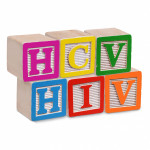Compared with the general population, hepatitis C virus (HCV) rates are substantially higher among men who have sex with men (MSM), in particular those living with HIV as well as HIV-negative men taking pre-exposure prophylaxis (PrEP), NATAP reports.
Presenting their findings at the International AIDS Conference (AIDS 2020), which was held virtually last week, researchers at the University of New South Wales and the World Health Organization conducted a systematic review and meta-analysis of HCV rates among MSM compared with the general population.
Looking at studies published between 2000 and 2019, the investigators found 196 pertinent papers.
Overall, 6.3% of HIV-positive MSM in the studies had HCV, as did 1.4% of HIV-negative MSM.
Most of the data came from studies conducted in Europe, the Americas and the Western Pacific. The prevalence of HCV among HIV-positive versus HIV-negative MSM was a respective 5.6% versus 0.6% in Europe, 9.4% versus 1.7% in the Americas and 6.3% versus 1.4% in the Western Pacific. The difference between the HCV prevalence rates according to HIV status was not quite statistically significant in the Western Pacific, meaning it may have been driven by chance. But the differences in Europe and the Americas were highly statistically significant.
A total of 45.6% of MSM who recently injected drugs had HCV, as did 30.2% of those who had ever injected drugs and 2.7% of those who had never injected drugs. In the Americas, from which the bulk of data for this particular breakdown, the respective rates were 65.3%, 28.4% and 1.7%.
Compared with the HCV prevalence rate in the general population, the prevalence rate was 3.0-fold higher among MSM as a whole, 6.4-fold higher among HIV-positive MSM and 1.5-fold higher among HIV-negative MSM.
Among HIV-negative MSM, the rate of diagnosis of HCV per 1,000 cumulative years of follow-up was 0.12 diagnoses among those not using PrEP and 14.8 diagnoses among those using PrEP. Among all MSM who reported no history of injection drug use, the diagnosis rate was 5.84 per 1,000 cumulative years of follow-up.
To read the NATAP article, click here.
To see all POZ coverage of AIDS 2020 Virtual, click here.







Comments
Comments